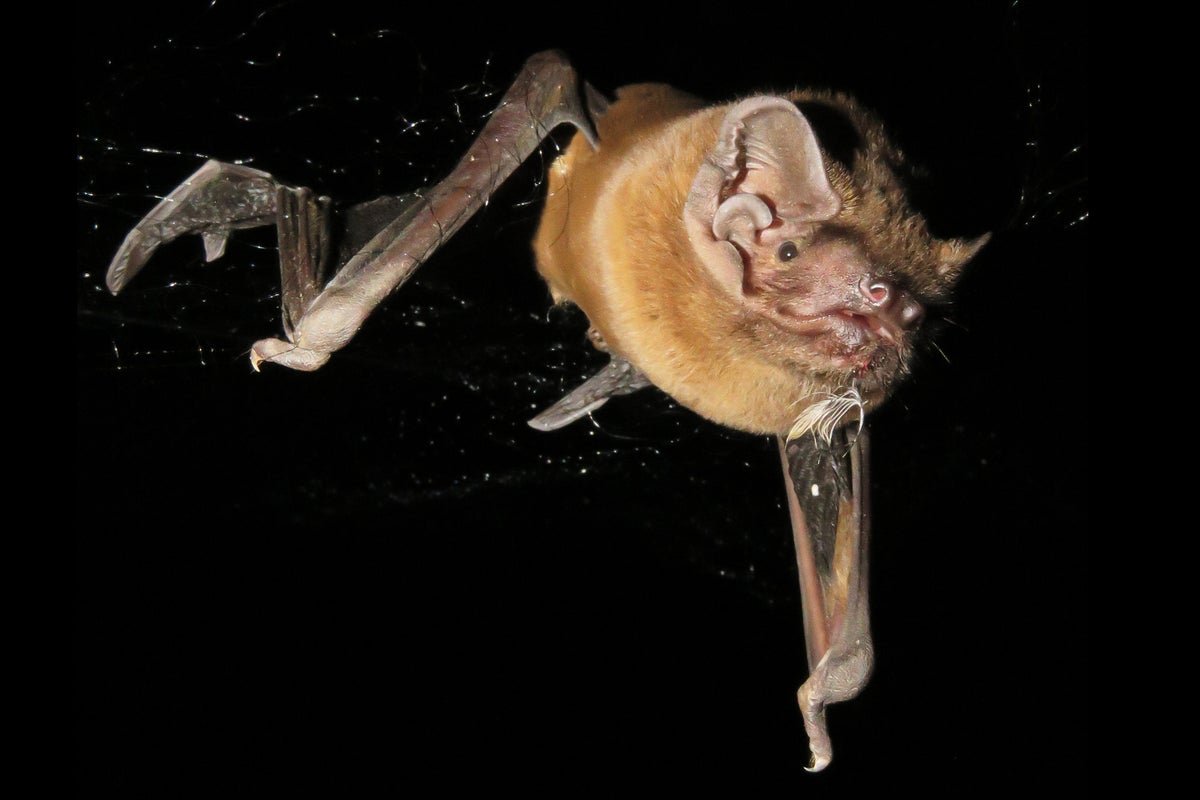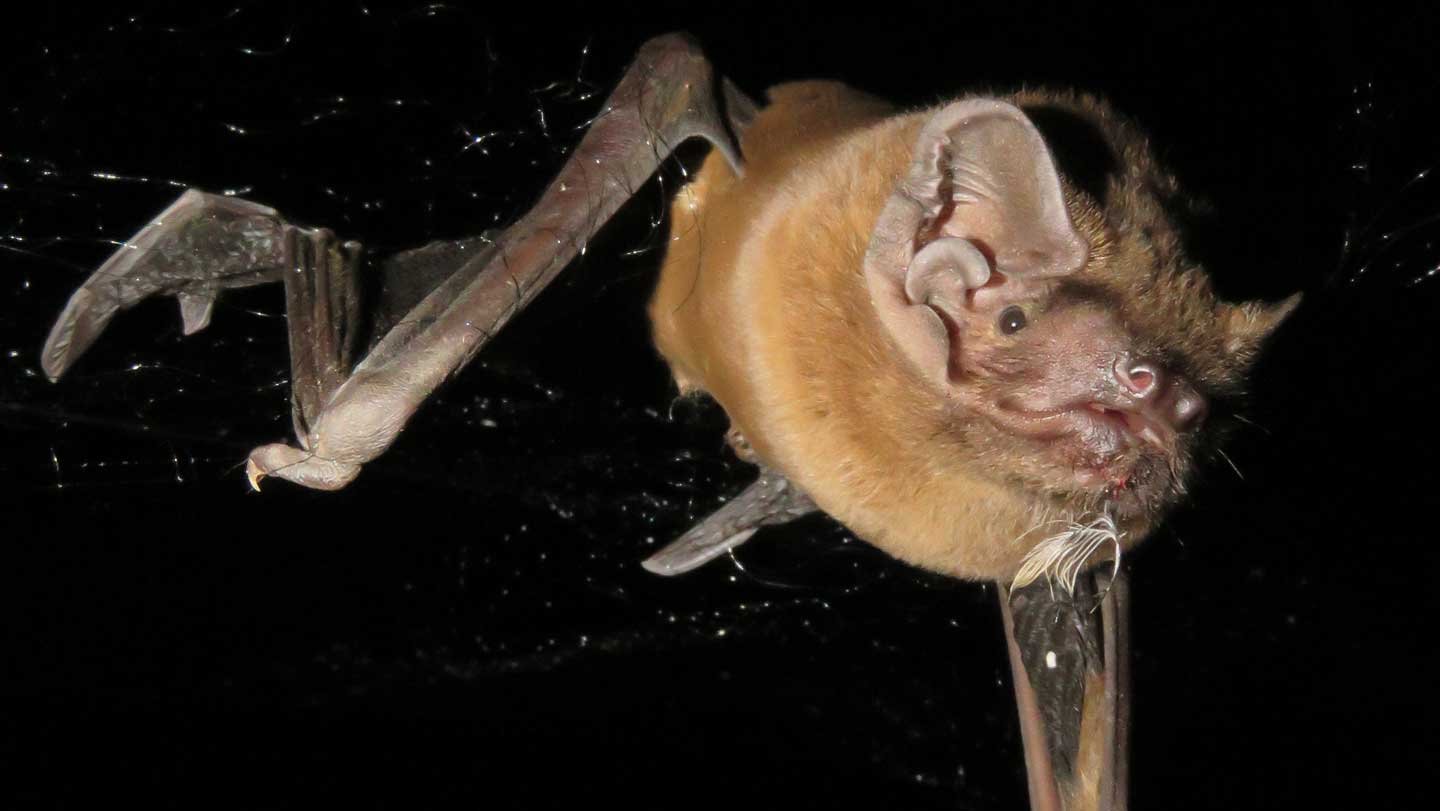October 9, 2025
3 min read
This Bat Recorded Itself Catching and Eating a Songbird in Midair
Scientists suspected that Europe’s largest bats snack on migrating songbirds when they can, but a stunning newly published observation proves it
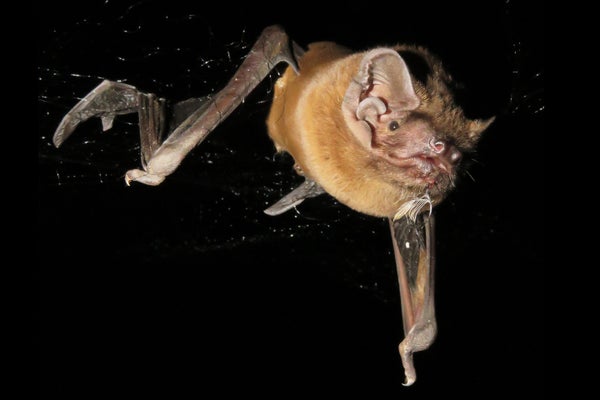
A greater noctule bat caught in a mist net with a passerine feather and blood in its mouth.
For the nearly three-year-old female bat soaring into the Spanish skies in March 2023, it was just another night of striving to feed herself. But her overnight exploits were about to become the stuff that scientists’ dreams are made of.
The bat—a greater noctule (Nyctalus lasiopterus)—was equipped with a high-tech tag recording its behavior. And from one particular recording, researchers were able to reconstruct a story with both cinematic drama and scientific value. That’s because the tag captured the bat pursuing, killing and eating a migrating European robin (Erithacus rubecula)—all in midair and while echolocating to navigate.
“There was this crazy noise and movement and a lot of echolocation, and I thought, ‘I’ve never heard this before on any recording,’” says Laura Stidsholt, a biologist at Aarhus University in Denmark and co-author of new research about the observation, published on October 9 in Science. “It was quite magical.”
On supporting science journalism
If you’re enjoying this article, consider supporting our award-winning journalism by subscribing. By purchasing a subscription you are helping to ensure the future of impactful stories about the discoveries and ideas shaping our world today.
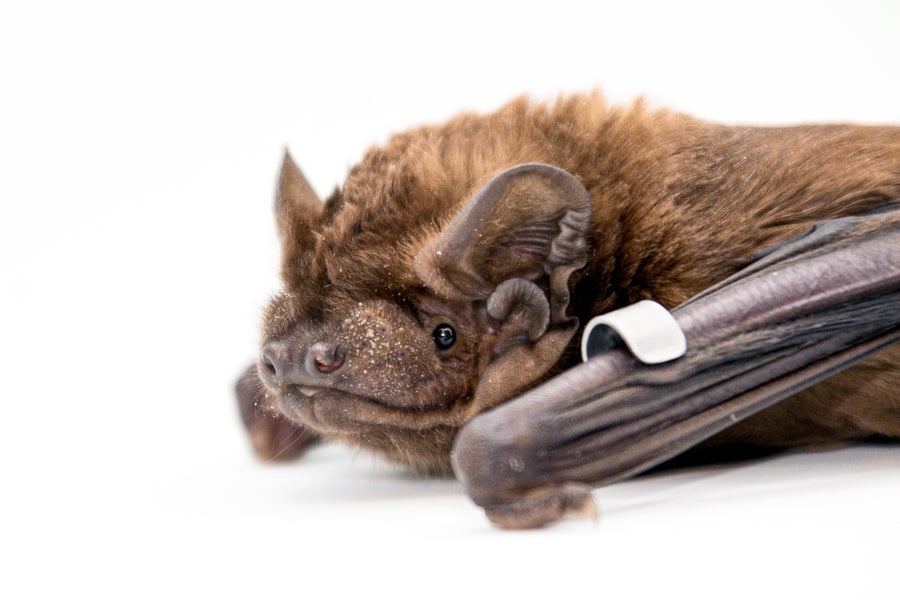
Greater noctules are among the largest and most endangered bats in Europe. Their usual fare is meatier insects—beetles and moths and the like. But in previous work, scientists analyzing the DNA found in bat poop had been surprised to find evidence of greater noctules feasting on songbirds—which are much larger than insects—during spring and fall migrations, when birds are active at night instead of during the day.
The bats are typically difficult to study, but scientists at Doñana Biological Station, an outpost of the Spanish National Research Council, have microchipped the bats that nest locally and can track when they enter and leave a nest box. The researchers paired that system with cutting-edge recording tags that captured an animal’s altitude and movement, as well as the sounds around it. During the springs of 2022 and 2023, the researchers tagged 14 different bats, gathering incredible reports of the furry mammals’ adventures.
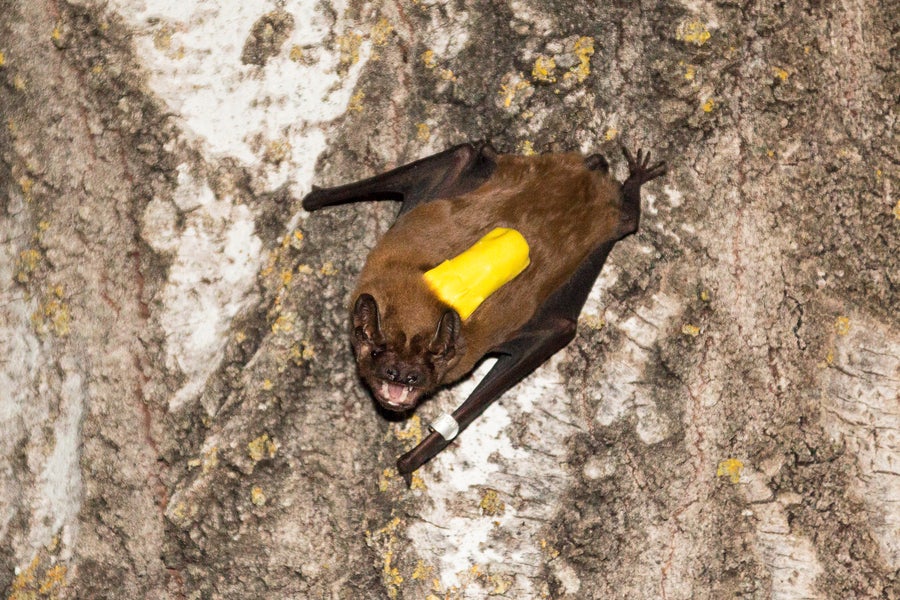
A great noctule bat equipped with a small device recording sound, altitude and movement.
“It’s like flying with the greater noctule bat,” says Elena Tena, a conservation biologist at Doñana Biological Station and co-author of the new research. “We could interpret everything that the bat was doing.”
And from that recording that startled Stidsholt, the researchers constructed quite an interpretation: The female bat soared to an altitude of three quarters of a mile, searching for prey, until it apparently locked in on a migrating songbird. Then it engaged with the bird and made a steep dive, during which the bat made its echolocation calls amid the sounds of an ongoing tussle between the two animals. As the bat approached the ground, the bird let out a string of panicked cheeps before ominously falling silent.
Then—for an incredible 23 minutes—the bat’s echolocation squeaks were punctuated by chewing and crunching, even as the animal kept flying. “They’re basically screaming with their mouths full,” Stidsholt says, noting that, proportional to their body size, these bats’ calls are among the loudest noises known to scientists.
Haunted by the incredible recording, the researchers asked some additional questions. First, they compared the bird’s distress calls with existing recordings of songbirds gathered by other scientists whose work requires catching the birds in nearly invisible “mist nets” to handle them. The cries of the bird caught by the bat matched those of the European robin.
The researchers also gathered torn-off bird wings found on the ground of known greater noctule hunting grounds. DNA testing confirmed saliva from these bats on the wings—supporting scientific hypotheses that, just as the bats do with their usual insect prey, the animals bite off and discard songbird wings after making a kill, likely to reduce the weight they carry while snacking.
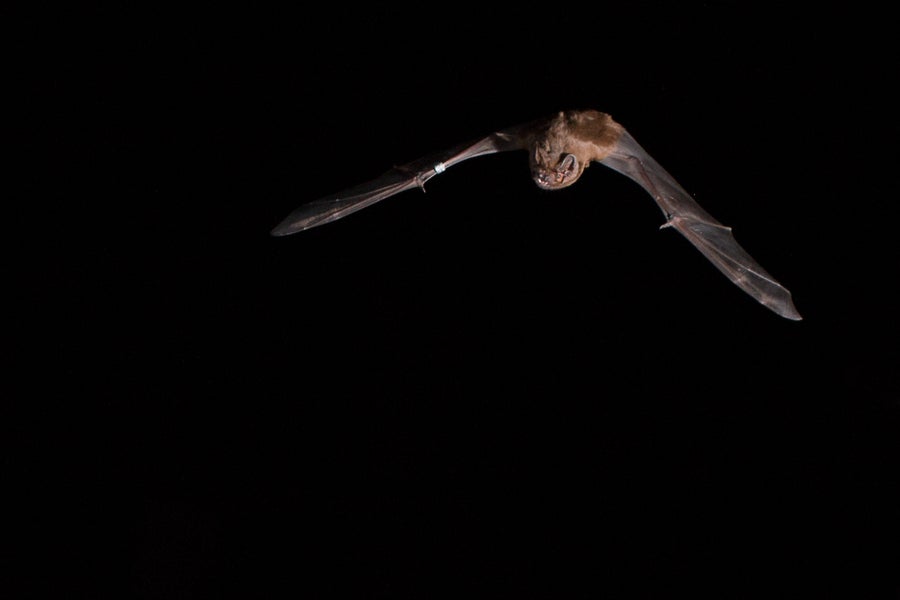
That makes the finding particularly interesting, says Riley Bernard, a bat biologist at the University of Wyoming, who was not involved in the new research. “Even though these species do eat insects, and that might be their predominant food behavior, they have this behavioral plasticity to be able to tap into resources when they’re available,” she says. Such flexibility could help see the bats through the many challenges they face, she hopes.
Bernard admits to some envy of the European researchers, noting that North America’s bats are all much smaller than the greater noctule—too small to carry the tags used in this experiment.
Danilo Russo, an ecologist at the University of Naples Federico II, who was also not involved in the new research, agrees. “I’d really love to fit a small bat with this kind of technology,” Russo says.
“Now we have this amazing means of penetrating the darkness and their hidden world,” he says. “I think it would be a complete game-changer, just like in this case.”
It’s Time to Stand Up for Science
If you enjoyed this article, I’d like to ask for your support. Scientific American has served as an advocate for science and industry for 180 years, and right now may be the most critical moment in that two-century history.
I’ve been a Scientific American subscriber since I was 12 years old, and it helped shape the way I look at the world. SciAm always educates and delights me, and inspires a sense of awe for our vast, beautiful universe. I hope it does that for you, too.
If you subscribe to Scientific American, you help ensure that our coverage is centered on meaningful research and discovery; that we have the resources to report on the decisions that threaten labs across the U.S.; and that we support both budding and working scientists at a time when the value of science itself too often goes unrecognized.
In return, you get essential news, captivating podcasts, brilliant infographics, can’t-miss newsletters, must-watch videos, challenging games, and the science world’s best writing and reporting. You can even gift someone a subscription.
There has never been a more important time for us to stand up and show why science matters. I hope you’ll support us in that mission.

